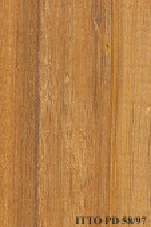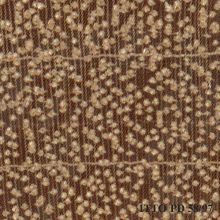
BALAU (Shorea laevis)
Trade Name
Balau
Scientific Name
Shorea laevis Ridley
Family
Dipterocarpaceae
Common Names
Balau; Pa-yom dong (Thailand); Bangkirai (Spain); Bangkirai (Italy); Bangkirai (Sweden); Sen (Vietnam); Phchek (Cambodia); Selangan batu (Sarawak); Bangkirai (France); Aek (Thailand); Bangkirai (Netherlands); Yakal (Philippines); Gisok (Philippines); Malaykal (Philippines); Sal (India); Thitya (Myanmar); Bangkirai (United Kingdom); Bangkirai (Germany); Chan (Thailand); Balau simantok (Malaysia); Selangan batu (Sabah); Damar laut (Malaysia); Pooti (Indonesia); Kedawang (Indonesia); Kumus (Indonesia); Selangan batu (Indonesia); Brunas (Indonesia); Benuas (Indonesia); Aggelam (Indonesia); Ca-chac (Vietnam); Bangkirai (Indonesia); Bangkirai (United States of America); Balau Kumus (Malaysia); Sengkawan darat (Malaysia); Kumus (Malaysia)
Scientific Name Synonyms
Shorea rogersiana Raizada & Smitinand; Shorea laevifolia (Parijs) Endert; Shorea ciliata Ridley
Description Of The Tree
Botanical Description
It is a very large tree up to 75 m tall. The bole is branchless for 18 to 27 m and up to 210 cm in diameter, with prominent buttresses of up to 6 m high.
Natural Habitat
It occurs in hilly areas at altitudes 200 to 1,000 m, often gregarious, growing on well drained soils.
Wood Identification
Anatomic Description Of Wood
Wood diffuse porous. Tangential diameter of vessel lumina 200 micras or more (large). Tyloses common. Vestured pits. Vessels per mm2 5 to 20. Vessel-ray pits reticulate and/or foraminate. Simple perforation plates. Intervessel pits small, 7 micras or less. Axial parenchyma in marginal or in seemingly marginal bands. Paratracheal axial parenchyma scanty and/or vasicentric. Axial parenchyma aliform. Axial parenchyma bands more than 3 cells wide. 4 to 10 rays per mm (medium). Body ray cells procumbent with mostly 2 to 4 rows of upright and/or square marginal cells (Kribs-II). Body ray cells procumbent with one row of upright and/or square marginal cells (Kribs-III).
-
 Wood Macro Photo Tangential Plane
Wood Macro Photo Tangential Plane
-
 Wood Micro Photo Of Transversal Section
Wood Micro Photo Of Transversal Section
Availability
Cites Status
Unrestricted
General Wood Description
Odor
It has no distinct odor, but it has a slightly bitter taste.
Color
The sapwood is sharply demarcated from the yellow-brown heartwood, darkening with age.
COLOR INDEX (1=Black, 7=Light yellow,white)
5
Grain
The grain is mostly interlocked.
Texture
Fine texture is reported in this species.
Natural Durability
It is resistant to fungi attack.
Natural durability index (1= Very high durability, 7=Vey low durability)
2
Silica Content
Silica Content: It contains 0.1 to 0.4 % of silica. Silica Value: 0
Resistance To Impregnation
The sapwood is permeable, but the heartwood is extremely resistant to preservative treatment, even if incised.
Wood Physical Properties
Basic Density or Specific Gravity (O.D. weight/vol. green) (g/cm³)
0.83
Air-dry Density (Weight and volume at 12%MC) (g/cm³)
0.96
Total shrinkage Tangential (Saturated to 0%MC) (%)
9.3
Total shrinkage Radial (Saturated to 0%MC) (%)
4.2
Drying Defects
Ease of Drying: Drying is rather slow and sometimes difficult to perform. Drying Defects: Risks of checks and distortions. Kiln Schedules: Schedule proposed as a reference by comparison with well known species taking into account to the general technological behavior of this species.
Recommended Dry Kiln Schedule
UK-G; JP-7; US-T8-B3
Dimensional stability ratio (Total Tangential Shrinkage %/Total Radial Shrinkage %)
2.2
Wood Chemical Properties
Wood Mechanical Properties
Bending Strength (MOR),12%MC (kgf/cm²)
1473
Stiffness (MOE) 12%MC (kgf/cm²)
204310
Compression parallel to fiber 12%MC (kgf/cm²)
795
Compression perpendicular to fiber 12%MC (kgf/cm²)
101
Shear strength radial 12%MC (kgf/cm²)
159
Janka hardness (side) 12%MC (kgf)
1026
Workability
Sawing
Considering its density it is moderately easy to cut.
Rotary Veneer Cutting
Although lamination is possible, it is unsuitable for the production of veneer and plywood.
Sliced Veneer
Although lamination is possible, it is unsuitable for the production of veneer and plywood.
Machining
It is easy if special sharp cutters are used, but severe difficulties are reported if interlocked grain is present.
Planing
The planing of air-dried timber is considered fair to difficult. Picking up is fairly common in the radial faces, a reduced cutting angle of 15 degrees is recommended.
Boring
In green condition, it is easy to bore, but boring of air-dried timber is slightly difficult.
Nailing
Pre-boring is required for nailing.
Gluing
It is reported to be easy to glue.
Finishing
It has a good finishing.
REFERENCED USES
End Uses Summary
EXTERIOR GENERAL, bridges, poles, stakes posts, crossties, HOUSING GENERAL, flooring, FURNITURE AND CABINETS, PLYWOOD AND VENEER, SPORTS, TOOLS, tool handles, agricultural tools, CONTAINERS, cooperage, truck bodies, truck flooring, NAVAL CONSTRUCTION, port pillar, port storage
Exterior General
- 1 - Tabela de resultados de ensaios fisicos e mecanicos
Bridges
- 2 - 25 madeiras da amazonia de valor comercial, caracterizacao, macroscopica, usos comuns e indices qualificativos
Poles
- 3 - Estudo dendrologico e determinacao das caracteristicas fisicas e mecanicas do genipapo (Genipa americana)
Stake Posts
- 5 - Propriedades fisicas e mecanicas da madeira e do contraplacado de Pinus elliottii
Crossties
- 8 - Maderas latinoamericas. III, Podocarpus standleyi ,Podocarpus oleifolius, Drims granadensis, Magnolia poasana y Didymopanax pittieri
General Housing
- 10 - Silica in Timbers
Flooring
- 14 - Handbook of Hardwoods
Furniture Cabinets
- 21 - Tropical timbers of the world. Part III-Southeast Asian and Oceanian Species.
Panels, Veneers
- 25 - Directory of Timber Trade Malaysia
Sports
- 38 - Annual Review and Assessment of the World Timber Situation 1998-ITTO
Tools
- 42 - Utilización Industrial de Nuevas Especies Forestales en el Perú.
Tool Handles
- 43 - Maderas de Bolivia (Características y Usos de 55 Maderas Tropicales)
Agricultural Tools
- 44 - Atlas of Peruvian Woods
Containers
- 50 - Properties of imported tropical woods
Cooperage
- 51 - Recopilacion de propiedades mecanicas de maderas creciendo en Chile
Truck Body
- 53 - Timbers of the New World
Truck Flooring
- 54 - Bulletin of the Government Forest Experiment Station N.157: Identification of Tropical Woods
Shipbuilding
- 55 - Tropical Timber Atlas of Latin America
Port Pillar
- 61 - Manual de Diseño para Maderas del Grupo Andino
Port Storage
- 62 - Estudio Tecnológico de Maderas del Perú (Zona Pucallpa) Vol I
Please Provide Information To View Producer Information